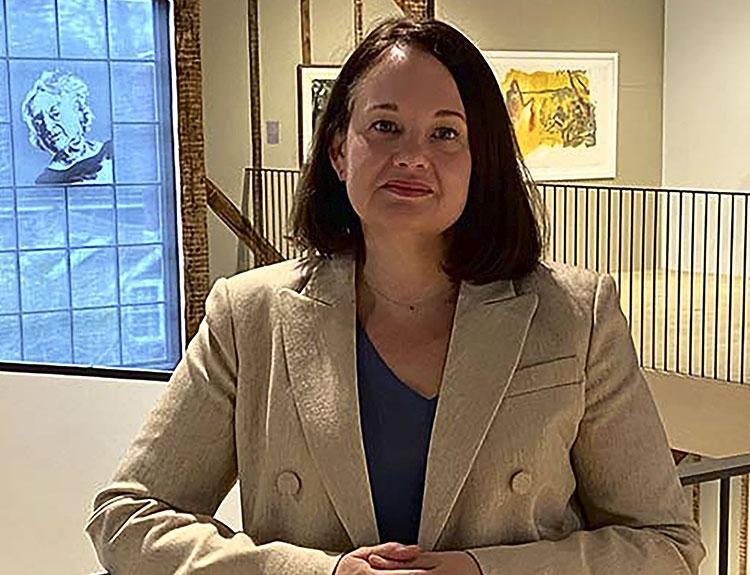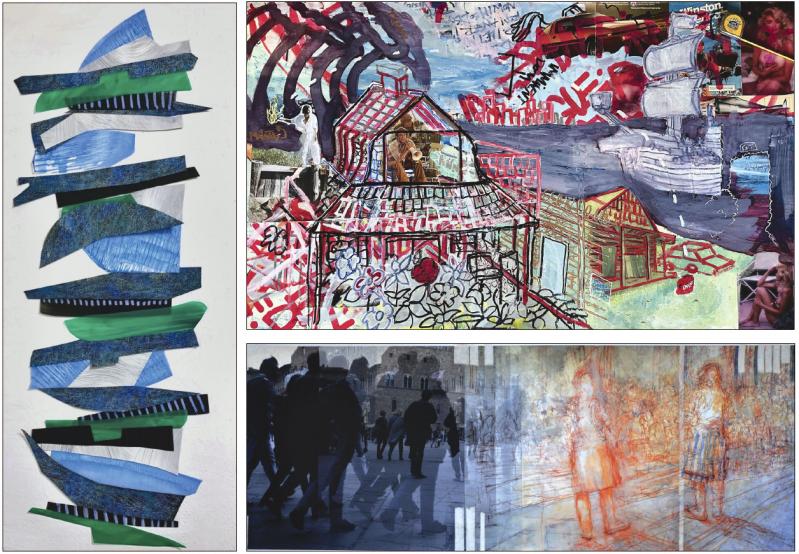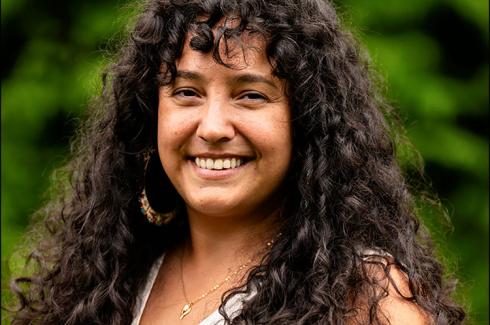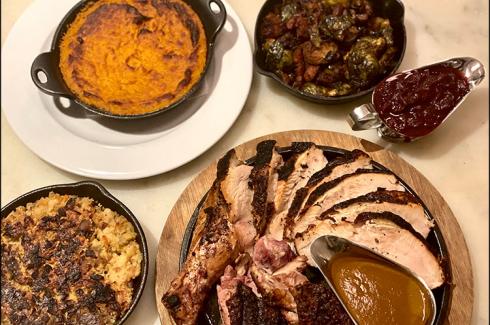“Here and There: The First Churchennial,” the multimedia exhibition now on view at the Sag Harbor arts center, represents one of the many ways in which the venue is unusual, if not unique. The fact that its residency program hosts some 40 artists each year is in itself impressive, especially given the modest size of its staff and the scope of its other programs.
But while several other venues, among them Skowhegan and MacDowell, have more residents each year, they are only residency programs. “We are the only ones I’m aware of who have ever done a triennial exhibition of their residency artists,” Sheri Pasquarella, The Church’s executive director, said during a tour of the exhibition.
“I was inspired to start the triennial because what I do understand from working with artists in the residency cycle is that they crave ongoing support and dialogue both with the communities they come into as well as the organization they come into. And artists are always seeking to have some measure of visibility and platform for the work they create. It is rare to have a residency program that has such a platform.”
The program was a core component of the vision for and acquisition of the deconsecrated church. When April Gornik and Eric Fischl first bought the building, “they thought of it as a campus where artists would live and work,” Ms. Pasquarella said.
The first artist residency, in January 2021, was the Martha Graham Dance Company. The original idea was to have a series of public performances, but because of Covid, the performers were rehearsing with masks on and did a live-stream rather than a live performance.
After the first year and a half, it was clear that many complexities came with housing people. In October of 2022, two months after Ms. Pasquarella was hired, she presented the venue’s board with a sustainable pilot program, one that is still intact.

At the same time as she was hired, several new staff members were added. As a result, three of the four bedrooms in The Church that had been given to residents were converted into offices. Housing for residents was moved offsite, first to a rental property and subsequently to a house at 136 Madison Street that was acquired by one of its board members. That house was the former parsonage of the church.
The program now accepts residents in a wide range of disciplines. “We’ve had scientists, chefs, architects, ensembles, musicians, you name it,” Ms. Pasquarella said. Each year, a group of artists, arts professionals, scientists, and thinkers, including previous residents, recommends two or three candidates, who are then invited to apply. The Church receives approximately 120 applications each year.
There are three residency cycles. The January to March session supports group practices, or collaborative work, which requires multiple people for its creation. That time period was chosen because more unoccupied housing is available for rental during the winter.
From April to October, individual artists from different disciplines are hosted in groups of three or four at a time. Writers are prioritized during June through August because of active summer exhibitions and events programming.
Community-based artists and disciplines, including the South Fork Community Residency, are the focus of November and December. The only cycle when applications are accepted without prior recommendation is the South Fork residency, which provides only work space.
For “Here and There: The First Churchennial,” all artists who were residents between 2021 and 2024 were invited to submit work. Visual artists could submit three works of their choice, for writers, a writing sample, and for others, a proposal.
From those applications, Ms. Pasquarella, Ms. Gornik, Mr. Fischl, and Samuel Havens, the first full-time designated workshop and residency manager, chose what they liked, and Ms. Pasquarella made the final decisions.
She also designed the installation. “Early on I was a little worried, because it can be very difficult to physically curate and design an installation with so many artists when there is no central theme,” she said. However, as an art adviser to the Coalition for the Homeless she had been responsible for organizing several 100-artist art auctions. That experience came in handy.
“What was really important to me in creating this installation is that every artist felt really proud of their placement. Each was given a space that honored their individual work. That is something you create by the amount of space around each piece, how it exists in relationship to others, and the openness of the floor plan.”
And because there was no a priori organizing principle, “I had to look at and explore the works and see what themes the artists might have been exploring unbeknownst to one another. And I did find quite a few.”
The west wall on the venue’s main floor holds works by Sabra Moon Elliot, Nanette Carter, Kaitlin Pomerantz, Blair Seagram, and Ben Hassett. While the works are very different in appearance, Ms. Pasquarella noted the importance of color to them as well as some essential concerns of modernism and postmodernism.
While Ms. Elliot is interested in taking the virtues of the grid that was established by artists such as Donald Judd and Agnes Martin, she subverts not only its linear structure but also the flatness of minimalism by creating bulging textured shapes out of plaster, wood, and acrylic.
Ms. Carter, on the other hand, opts for extreme flatness, layering strips of Mylar, which are so thin that from a distance it looks more like a painting than a collage. The repetitive elements of the vertical composition could be seen as a wobbly grid of sorts.
While Ms. Seagram is a photographer, she is represented by “Shelter Green 10,” a sculpture made from UV ink on plexiglass. “The essential component of photography is the study of light,” said Ms. Pasquarella. “Thinking about photography, she was eventually led to creating sculpture about light.”
Mr. Hassett’s “Photograph of a Chair #11,” a large archival pigment print, consists of multiple exposures of the creation of a chair, which seems to explode in a riot of different colors.
On the opposite wall, works by Linda K. Alpern, Jackie Hoving, and Norman Paris treat the idea of self-portraiture and identity in different and interesting ways. While to those who know the artist, Ms. Alpern’s “Private Moment” can be taken for a self-portrait. “Linda is not Linda,” Ms. Pasquarella said, “but everyone thinks it is.”
Mr. Paris’s “Record Ruin (Bad Company),” graphite on paper, may seem far from any kind of portrait, but it is an excavated drawing of an album cover for the 1970s rock band and one of a series of drawings of the covers of albums that have helped define him. Hence, the self-portrait aspect.
Works by Ivan Cofield, Jordan Seaberry, and the artist known as Mr. Wash deal with racial politics and civil rights in different ways. In addition to being an artist, Mr. Seaberry is a civil rights attorney in Providence, R.I., while Mr. Wash was a wrongfully convicted person who taught himself to paint while incarcerated for more than 20 years. Then-President Obama overturned his conviction.
Three unconventional landscapes occupy another section. ANNA!’s “Grey Gardens Under Siege” reflects her background as a graffiti artist, Jim Gingerich’s “Space Not Form” is a surreal and fantastical landscape, and Peter Solow’s “Piazza Signoria,” a mixed-media composite, includes multiple exposures of photographs taken outside the Uffizi Gallery in Florence that blend into a cartoon, which is the traditional term for sketches made for wall murals.
The exhibition, which like all of the venue’s shows includes informative wall labels, will run through Dec. 29 with a range of public programs featuring exhibiting artists.




